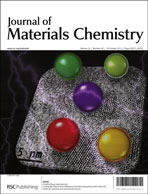Electronic structure and thermoelectric performance of Zintl compound Ca5Ga2As6
Abstract
Ca5Ga2As6 gives us a chance to achieve a high thermoelectric performance with a normal bulk system. This is mainly due to the fact that its complex chemical structure can not only supply an ultra-low lattice thermal conductivity but also show a high Seebeck coefficient. In this paper, we have discussed the lattice, electronic, and transport properties of Ca5Ga2As6 for elucidating its high thermoelectric performance. In our calculations, density-functional theory and Boltzmann transport theory were used. For intrinsic Ca5Ga2As6, the valence band effective mass is larger than the conduction band effective mass, which leads to its positive sign of S over the whole temperature range. By studying the anisotropy of its transport properties, we find that the transport properties of p-type Ca5Ga2As6 are better than that of the n-type one, which mainly comes from the large anisotropy of its band structure. Moreover its transport properties along the z direction are much better than those along the x and y directions, which can be attributed to its anisotropic one-dimensional lattice structure. At different temperatures, the peak value of ZeT appears at different carrier concentrations, which makes it possible to obtain a highest efficiency under large temperature gradients. The carrier concentrations corresponding to large ZeT are in the range of 0.033–0.5 e per uc, which is equal to 5.19 × 1019 cm−3 to 7.87 × 1020 cm−3. The largest value of ZeT is equal to 0.95.


 Please wait while we load your content...
Please wait while we load your content...